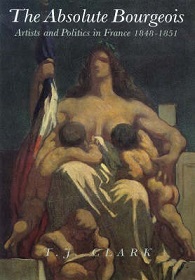
The Absolute Bourgeois - Artists and Politics in France 1848-1851
When this book and its companion volume Image of the People: Gustave Courbet and the 1848 Revolution appeared in 1973, they were taken as a challenge to the way art was usually written about. 'A justification of a certain kind of art history,' was how The Spectator put it. 'The Absolute Bourgeois', said The Times, 'is a product of that school of art history whose history is as well-read as its art, and whilst it covers only a small area of time and place, Clark's approach and style are such that it throws up enough ideas and pleasures to illuminate far beyond its rather special circumstances. It is suffused with wit and pathetic irony.' Clark's subject is painting and print-making in the years following the 1848 Revolution in France - 'a time', so he argues, 'when art and politics could not escape each other.' The book tells the story of a handful of artists trying to take advantage of that unfamiliar (and short-lived) situation. Daumier and Millet are central, particularly in their dealings with the new State's art-patronage machine; Delacroix figures as painter and diarist, in agonized withdrawal from the possibility of change, haunted by his own Liberty Guiding the People; and Baudelaire is depicted, after a moment of tortured political involvement in the first months of the Republic, as the great poet of post-revolutionary despair...
